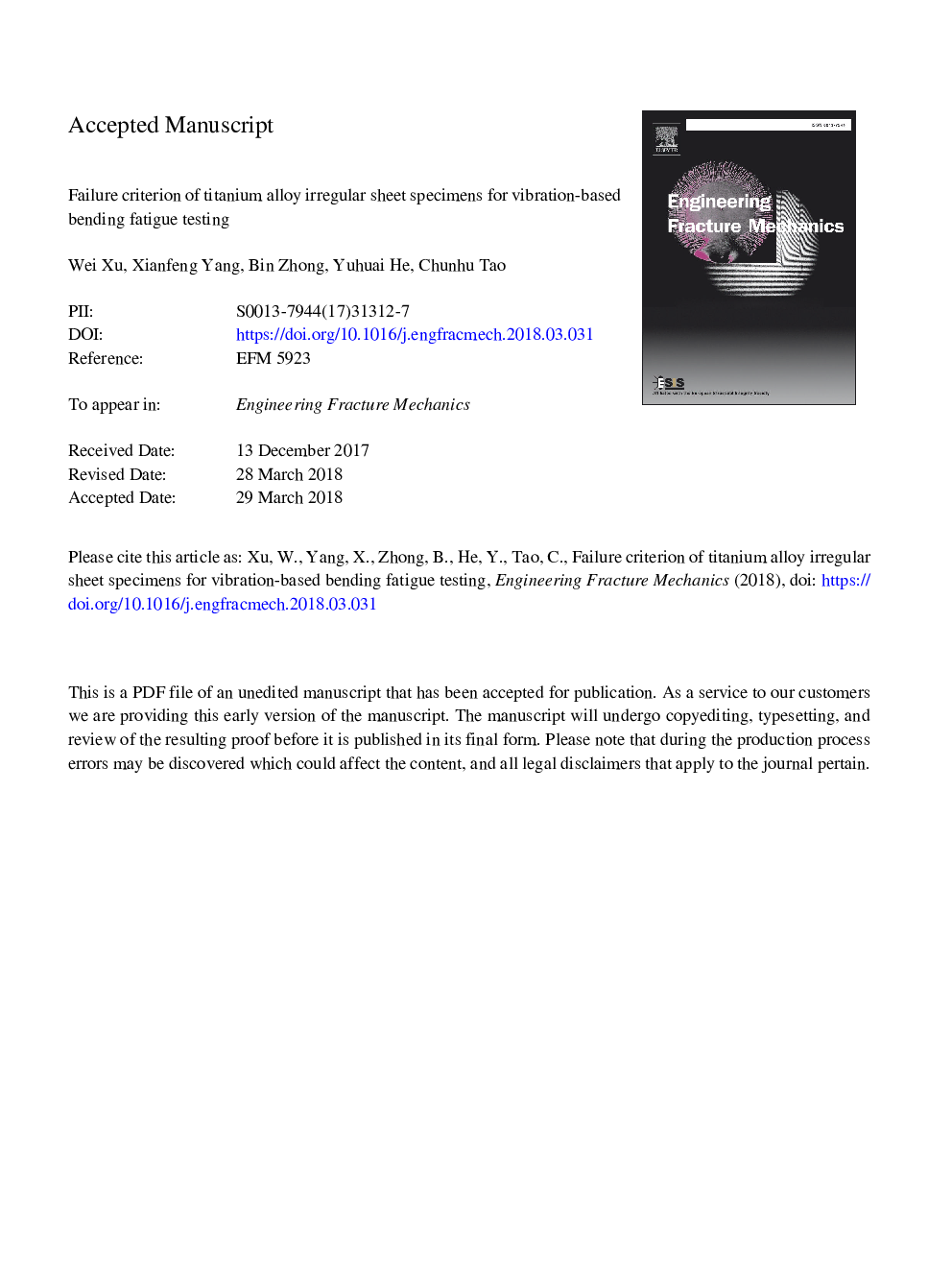| Article ID | Journal | Published Year | Pages | File Type |
|---|---|---|---|---|
| 7168832 | Engineering Fracture Mechanics | 2018 | 26 Pages |
Abstract
The failure moments of vibration-based fatigue tests are usually defined based on the natural frequency drops of specimens. But the selections of the critical values of the frequency drop have been very arbitrary in the previous tests, lacking of convincing reasons. The present paper aims to propose a failure criterion of titanium alloy irregular sheet specimens tested in a vibration-based bending fatigue experiment. A novel three-dimensional finite element model of the specimen is built, with a cohesive zone model employed to simulate the fatigue dangerous zone (FDZ) and the semi-elliptic crack propagation process of the specimen. A failure criterion to define the critical natural frequency drop is subsequently proposed based on the obtained computational results. Furthermore, a vibration-based bending fatigue test for the specimens is conducted to verify the computational model and the proposed failure criterion. After comparing the present testing results with the results of a similar bending fatigue test, the two types of the testing results are found very close. The vibration-based bending fatigue test with the proposed failure criterion provides an effective way for obtaining accurate fatigue life of irregular specimens.
Related Topics
Physical Sciences and Engineering
Engineering
Mechanical Engineering
Authors
Wei Xu, Xianfeng Yang, Bin Zhong, Yuhuai He, Chunhu Tao,
